By Quinn Hand, BHSc, ND
Our toxic burden
Every one of us is living in a toxic world. It is not a question of if we are toxic, but how toxic. In the United States alone, there are over 80,000 chemicals registered for use. Less than half of the high-volume chemicals have been tested for toxic risk to humans and only 7% have been assessed for developmental effects in children. Plus, many cross the placenta, accumulating while we are still in the womb. More alarming still, the effects of multiple chemical exposures, or synergistic effects are rarely evaluated – researchers are only now beginning to learn of the serious and far-reaching consequences.
Are you at risk?
Toxic exposure happens daily, often while engaging in typical life and work activities. Common sources of exposure include:
- Certain foods, such as farmed fish, fatty meats, non-organic dairy and produce
- Jobs or hobbies that involve use of common chemicals, such as adhesives and paints
- Active dieting or a diet that has resulted in significant weight loss (chemicals are mobilized from fat)
- Frequent airline travel
- Petroleum products
- Use of personal care products that contain common toxins, such as parabens & phthalates
- Household cleaners and air fresheners
- Cigarette smoke
Do you have signs of toxic overload?
The most common effects of toxin accumulation impact the immune, nervous and endocrine systems, including:
- Immune: Allergies, asthma, chemical sensitivity, chronic infection or lack of cold/flu, autoimmunity, cancer
- Neurological: Fatigue, headache, brain fog, balance issues, memory impairment, mood changes, tremors, neurodegenerative diseases, developmental delay in children
- Endocrine: infertility, low thyroid function, body temperature dysregulation, sleep disturbance, menstrual changes in women, changes in sexual interest and function, diabetes, hormone imbalances
- Other: fibromyalgia
What can you do?
While the picture may seem bleak, there are some simple steps you can take to reduce your toxic exposure and burden. Here are my top 6:
- Buy organic and/or local – this includes produce, meat and dairy.
- Detox non-organic produce – use a veggie wash or create your own with vinegar and water, letting produce soak for 10-25 minutes.
- Don’t eat farmed fish or big fish – these are a huge pool of PCBs and heavy metals.
- Never microwave in plastic – endocrine-disrupting bisphenol A (BPA) can leach into food.
- Ditch the lotions & potions – get rid of scented detergents & fabric softeners, personal care products with parabens, phthalates & triclosan (an antimicrobial agent that contains chlorine) and conventional air fresheners.
- Visit your local naturopathic doctor!
The Shopper’s Guide to Pesticides in Produce™ created by the Environmental Working Group will help you determine which fruits and vegetables have the most pesticide residues and are the most important to buy organic. You can lower your pesticide intake by avoiding the most contaminated Dirty Dozen and choosing the least contaminated from the Clean 15. Check out their info-graphic below


Leave A Comment
You must be logged in to post a comment.